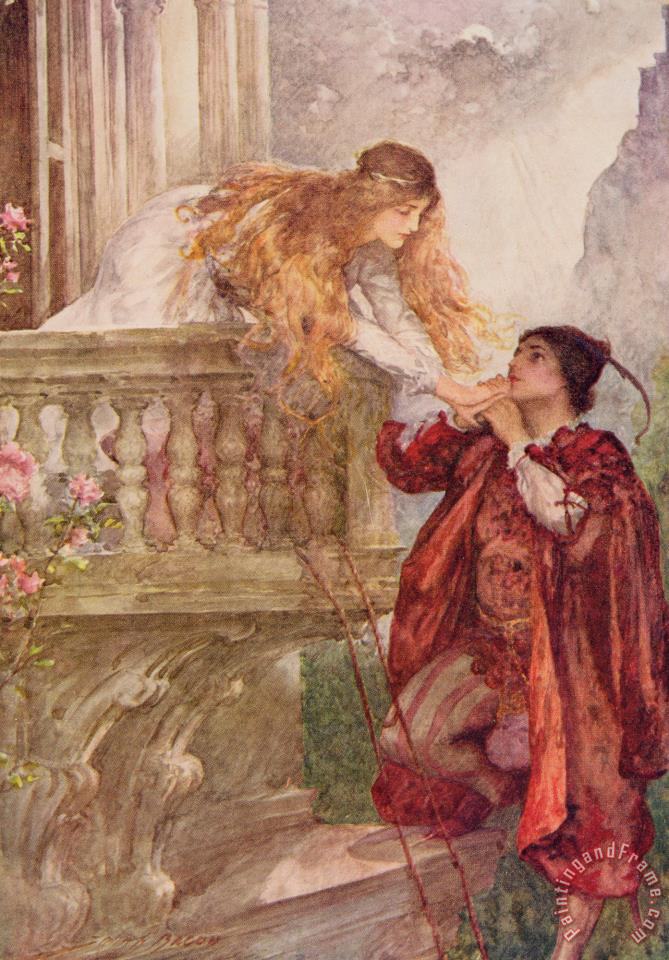Knowing how to create a theme for a story can be a difficult task. Literary themes are a little vague at the best of times and guidance on making and developing them in a story or novel isn’t always clear.
But fear not for help is at hand. In this in-depth guide, we’re going to cover everything you need to know about theme in writing.
We’ll first take a look at the definition of a literary theme. We’ll discuss some examples of popular themes and go over ways of coming up with our own. We’ll also look at useful ways to evoke the theme from an existing story, which can save you a lot of headaches.
Let’s dive in.
What Is A Theme?
A theme takes a hard look at the meaning of things and examines deep-rooted ideas. A story with a theme is a story with a point. It’s only when the writer considers this element, according to master editor Sol Stein, “does he achieve not just an alternative reality, or loosely, an imitation of nature, but true, firm art—fiction as serious thought.”
People take different approaches to creating a theme for a story.
American novelist John Gardner (who had the interesting middle name ‘Champlin’) argued that theme is not imposed on a story, but rather evoked from within it. Initially, it’s intuitive, but finally becomes an intellectual consideration on the part of the writer.
While other writers agree with this approach, it’s not the only one to take when considering the theme. It can be engineered into your story, considered beforehand to give it focus, to help you make out your argument.
A contrasting approach to literary themes comes from one of my favorite creative writing teachers, Lajos Egri. The Hungarian playwright believed that a story couldn’t be written without a premise or theme.
Egri argued that the creative writing theme provides the framework, the structure, the direction. If the writer begins to stray off track, the theme keeps them focused.
But a theme should not consume your story. It’s just one component. Writer and blogger Chuck Wendig describes it as “a drop of poison: subtle, unseen.”
Don’t make it too subtle though, otherwise, it may bypass your readers. Let’s take a look at why a theme in a story is important.
Further Reading – How To Create A Premise
Is A Theme Important To A Story?
As eluded to above, the theme of a story is what it’s about, what it means. It should not be confused with the plot—the two are separate elements, yet linked.
For example, if we look at the classic romance story of Romeo and Juliet, the plot is about two individuals from rival families falling in love and dying as a result of a series of tragic events. But that’s not what the story is about. The themes, in simple terms, look at love, fate, and family, amongst others.
The theme provides the platform for the writer to leave their mark, to put forward their views on a particular topic or idea. It’s the job of the writer to “dig out the fundamental meaning of events by organising the imitation of reality [the story] around some primary question or theme suggested by the character’s concern.”
As we’ll see below, a theme doesn’t have to be based on morality. It can be a more general idea, a topic that reappears throughout a story.

Examples Of Themes
When you seek out examples of literary themes you’ll invariably find lists of single-word suggestions. It’s important to remember that while it’s helpful to summarise themes in this way, they should not be limited to just that one word.
Instead, think of it as an essay question you’d find in school or university. You’re asked to explore or criticise a concept, and in essence, you’re doing the same with your theme.
“Theme can be a broad topical arena, or it can be a specific stance on anything human beings experience in life.”
A theme is not a question, it’s the answer. The process of exploring the theme in your story is the journey your characters go on to come to realise this answer.
Here are a few literary theme examples:
- Alienation – the effects of it, how to fight it.
- Betrayal – how the pain feels, attitude changes to friends and loved ones.
- Coming of Age – the loss of childhood innocence, the shift from childhood to adulthood, or a significant step in personal growth.
- Courage – courage to face adversity, to deal with conflict, the development of it, or the loss of it.
- Discovery – discovering new places, revealing information, inner meaning, inner strength, treasures.
- Death – how to escape it, facing it, dealing with the effects of it.
- Fear – conquering it, coping with it, the crippling effects of it.
- Freedom – losing it, longing for it, striving to achieve it, fighting for it.
- Good Versus Evil – the struggle between the two opposing forces, the triumph of one over the other.
- Justice – the fight for it, injustices, seeking the truth.
- Loss – of life, innocence, possessions, freedoms.
- Love conquers all – love provides the motivation to overcome an obstacle.
- Religion – the effect religion has on individuals, how beliefs shape their lives, extremists such as cults, sin, the afterlife.
- Power – gaining it, handling it, losing it, fighting for it.
How To Create A Theme For A Story
So, let’s take a look at how to create a theme for a story.
As we’ve seen above, there’s no right way to go about developing themes. Some writers begin with it and build the story around it while others look to uncover it as the story develops. Here are some essential tips for creating a theme:
- Start with your message – Your story’s theme is essentially the message you want to convey to your readers. Therefore, it’s important to have a clear idea of the central message you want to communicate before you begin writing. This will help you stay focused and ensure that your story has a clear purpose.
- Choose a universal theme – A universal theme is one that resonates with a wide range of readers, regardless of their background or experiences. Examples of universal themes include love, loss, betrayal, redemption, and coming-of-age. Choosing a universal theme will help ensure that your story is relatable and emotionally impactful.
- Use symbolism and imagery – Symbolism and imagery can be powerful tools for reinforcing your story’s theme. Think about objects or images that are associated with your theme and incorporate them into your story. For example, if your theme is about the passage of time, you might use a clock or an hourglass as a symbol.
- Show, don’t tell – Instead of simply stating your theme outright, try to weave it into the story through the actions and experiences of your characters. This will make your theme more engaging and help your readers connect with it on a deeper level.
- Explore multiple perspectives – Your story’s theme can be explored from multiple perspectives, and doing so can add depth and complexity to your narrative. Consider how different characters might experience and interpret your theme, and incorporate these perspectives into your story.
- Tie it all together – Your story’s theme should be present throughout the entire narrative, from beginning to end. Make sure that every element of your story, from the plot to the characters to the setting, ties back to your theme in some way. This will help create a cohesive and satisfying reading experience for your audience.
How To Evoke A Theme From An Existing Story
We’ve covered ways of creating a theme from the beginning, but we’ve not spent much time looking at how to reveal a theme that may already be there in our novel or story.
There are two simple questions you can ask yourself to help evoke the theme of your story. You can ask yourself these questions at any stage of the writing process—beginning, middle, or end, and it’s always helpful to keep them in mind to help you maintain focus.
- What is the point I’m looking to prove?
- What deep-rooted idea is being examined?
Keeping these two simple questions in mind when you’re writing scenes can really help to maintain that focus on what the story is actually about. So easily we can find ourselves distracted by worldbuilding or characterization that we simply lose sight of the point of the story. This writing tip can help.
The Secret Snapshot Approach
This writing technique is one of my favourites. It’s particularly useful for giving your story an emotional edge, an edge so sharp it cuts through to your theme and moves the reader. The theory is simple, the practice is a little trickier.

Master editor Sol Stein utilised this approach when teaching his writing students. He first asked them to think of a snapshot of a memory so private that if that snapshot was a tangible image they wouldn’t carry it in their wallet or purse in case anyone found it, family included.
“Some writers squirm through the process, shifting uncomfortably in their seats. That’s a good sign.”
You can also look to conjure the secret snapshots of other people, ones that you wouldn’t be allowed to see under any circumstance. The bravest writing someone can do is to explore the recesses in which the secret snapshots of their friends, enemies, and themselves are stored.
Writing Exercise: Create A Theme
As an exercise, write down what you see in your most secret snapshot. Be brutally honest. To help, I’ll give my own example. I have a vivid recollection of the day my mum and dad told me they were splitting up. I was about thirteen. I remember crying about not being able to go to football training anymore, which my dad took me to each day after school. Looking back, what I was really upset about was the fact that my life was never going to be the same again, that the image of the life I knew was being shattered before my eyes.
When you’ve come up with your example, ask yourself whether you’d carry your snapshot in your purse or wallet. If yes, think of another. You want to reach deep into your emotional memories and find the most personal. “The best fiction reveals the hidden things we usually don’t want to talk about.”
Once you’ve had some practice uncovering your own, it’s time to apply that process to your characters.
How To Reveal A Theme In Writing
I referred to Chuck Wendig above and how he says that a theme should be subtle. It’s widely agreed that a theme shouldn’t be shoved down the reader’s throat, but one that is apparent should their mind turn to consider it. Yet how do you achieve this subtlety?
Let’s take the theme of nakedness as an example. You could consider adding details to suggest nakedness, for instance, the chipping paint of a wall, characters who show a lot of skin, or the psychological nakedness of a character.
There are instances where it’s fine to be direct with your theme, such as showing instead of telling. For example, how Forrest Gump tells us that ‘life is like a box of chocolates, you never know what you’re gonna’ get’, just like the film itself.
Another method you can utilise to reveal a literary theme is to feature ‘counters.’ These are things that contrast with your theme, so for example, with nakedness, you could have a character who always wears two jumpers regardless of the weather.
Learn More About Creative Writing
If you’d like to learn more how creative writing, check out some of these guides below:
- A guide by Oregon State University on themes in literature
If you’d like any more help and support with learning how to create a theme for a story, please contact me.
- Mastering Dialogue: The Very Best Tips - January 12, 2024
- The Proven Method Of Writing Short Story Cover Letters - November 10, 2023
- Tips, Advice And Guidance On Writing Villains And Antagonists - November 7, 2023




